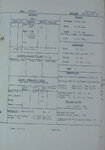Admiral Beez
Major
Arguably the best medium transport aircraft of WW2 is the Douglas C-47 Skytrain and its license-built versions (Lisunov Li-2 and Showa/Nakajima L2D). The second best, IMO is either the Junkers Ju 52 or Curtiss C-46. I'm referring to these as medium transports, where for example the C-47 max cargo wgt was 5,000 lbs., and the Ju 52 cargo wgt was 3,500 lbs. I appreciate cargo capacity may not be the best way to differentiate from larger transport, such as C-54, so I ask for your advice. Number of engines may not suit either, as I would classify the four-engine de Havilland Albatross as a medium transport.
So, excluding heavy four-engine transports like the C-54 Skymaster, Avro York, giants like the Messerschmitt Me 323 and flying boats, which is the 3rd best land-based medium transport aircraft of WW2? Interpretations of "best" are open to opinion, to me it includes cargo capacity, ease or ability of loading/unloading, rough strip ability and ease of production and reliability.
So, excluding heavy four-engine transports like the C-54 Skymaster, Avro York, giants like the Messerschmitt Me 323 and flying boats, which is the 3rd best land-based medium transport aircraft of WW2? Interpretations of "best" are open to opinion, to me it includes cargo capacity, ease or ability of loading/unloading, rough strip ability and ease of production and reliability.
Last edited:

